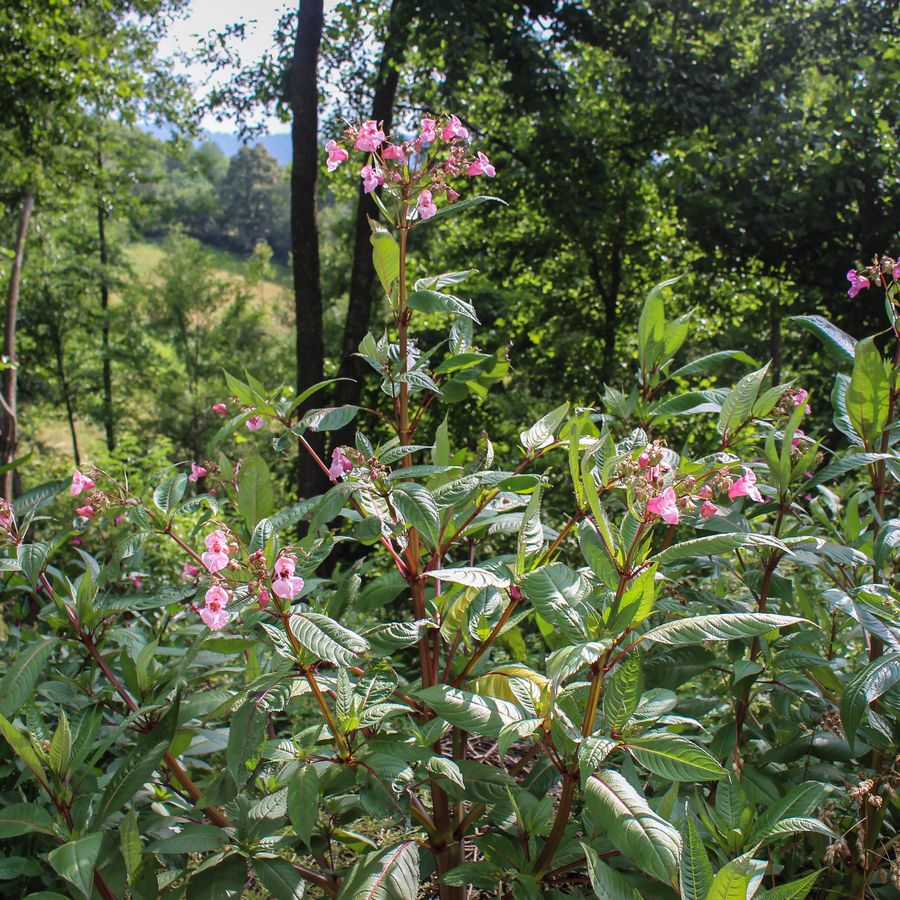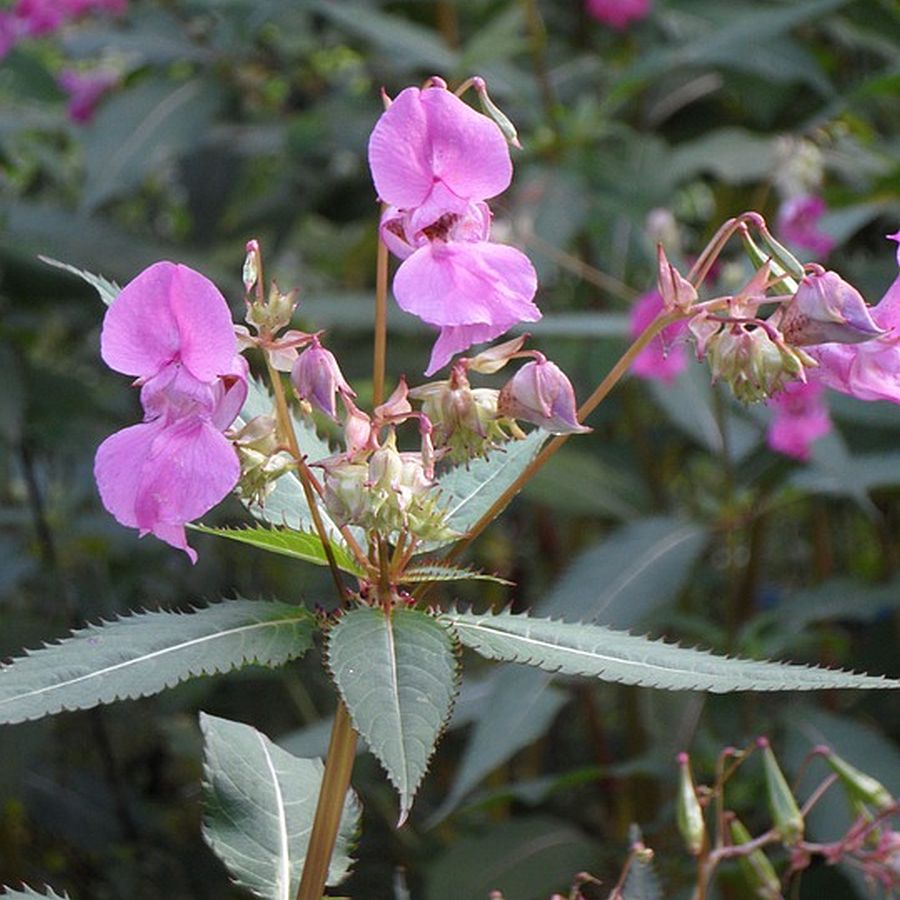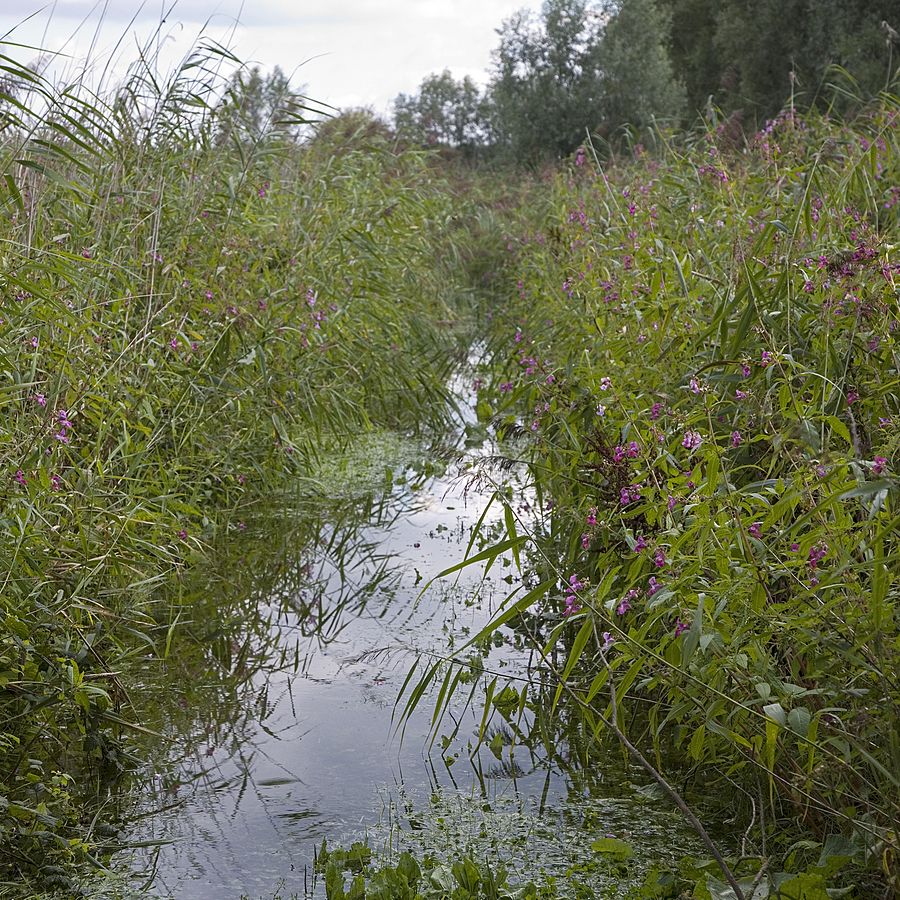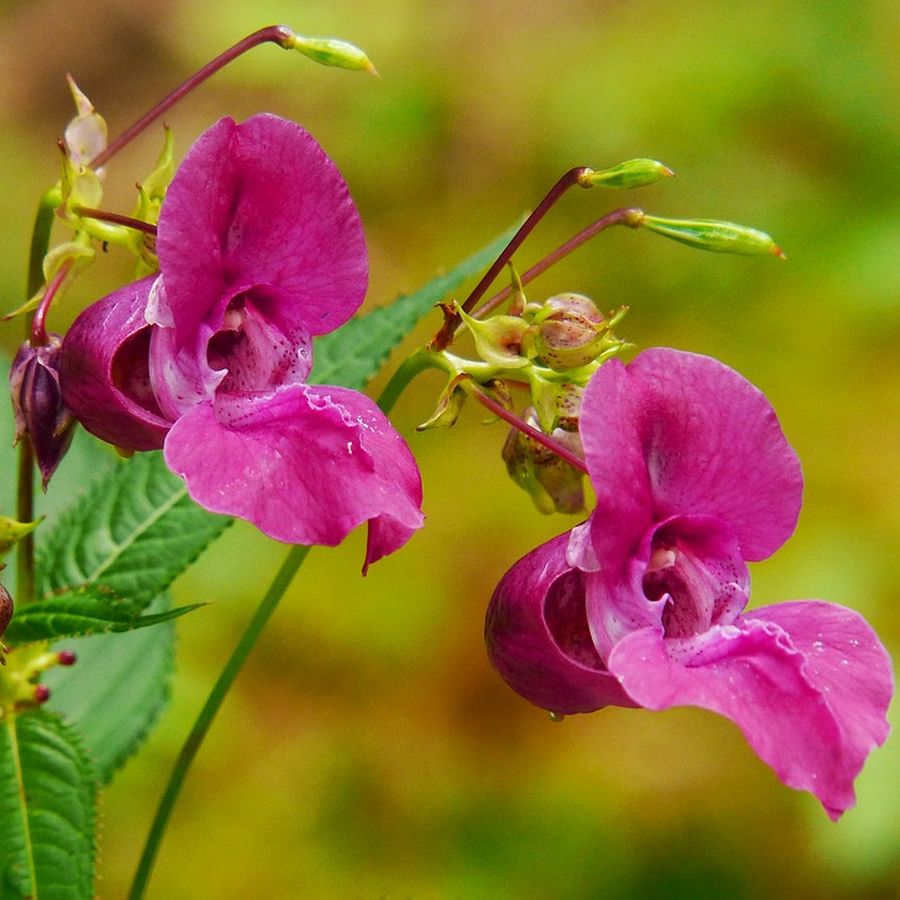Himalayan Balsam Control & Removal
At Kustom Landscapes & Ecology, we specialise in Himalayan Balsam control and removal in Dorset, Hampshire, Wiltshire, Bristol & Bath, Gloucestershire, Somerset and Devon, along with a range of other invasive plants.
Himalayan Balsam as its name suggests natural origins are from the regions of the Himalayan Mountains in Asia. A tough environment that requires coping strategies and adaptations for survival. In the UK it has become outright the most prolific non native invasive species that we have to contend with.
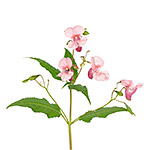 Above ground Himalayan Balsam
Above ground Himalayan Balsam
Hollow Upright stems of red/green with tapering leaves to a point, Himalayan balsam can reach a height of 2.5 meters within a season allowing it to dominate other indigenous annuals and perennials. Himalayan balsam produces pink flowers and produce a large quantity of nectar which is one positive. However after flowering throughout summer into autumn, Himalayan Balsam will develop quite unique seed pods which will explode on contact with a number of vectors that will disturb it including animal, human and weather events. These popping seed pods can send up to 500 seeds per plant in a trajectory up to 5 meters away. The seeds can then remain viable for up to 2 years
Below Ground Himalayan Balsam
The roots system of Himalayan Balsam is minimal as it is an annual plant meaning that it will only survive one full cycle and then die, being replaced by a new plant that has grown from one of many of its seeds. It is this extensive seed quantity that creates a matting effect of growth, across large swathes of ground. The ideal conditions for Himalayan Balsam are moist soils to be able support large populations of the plant. River banks and water ways are prime locations for this. River banks rely on structural integrity to stabilize, Flora such as small trees and shrubs are perfect for this role due to strong roots systems that will last for decades if not centuries. Himalayan balsam’s ability to populate these areas quickly means out competing potential structurally strong flora. Himalayan Balsam’s small annual roots system will die off each year alongside above ground growth and can leave large swathes of river bank open to erosion.
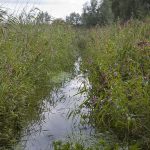 Himalayan Balsam is classified as an invasive non-native species (INNS): http://www.nonnativespecies.org
Himalayan Balsam is classified as an invasive non-native species (INNS): http://www.nonnativespecies.org
Himalayan Balsam or Impatiens glandufoliar as it scientifically known comes under this classification for the following reasons:
- Growth rate and size- outcompetes native flora
- Different reproductive cycles and methods- explosive seed pods with large trajectory
- Resisitant to natural predators and pests – no native insects actively able control plant quantities
A key term we use to look at the effect of an invasive species such as Himalayan Balsam is biodiversity which means the variety of animal, marine and plant species throughout the world or a particular area. Biodiversity is key to balancing ecosytems with all species contributing in some way to creating a precise environment which humanity is essentially the main beneficiary. When bio diversity is compromised the adverse knock on effect is vast. The biggest negative effects on biodiversity are:
- Climate change
- Deforestation and habitat loss
- Overexploitation (overharvesting, overhunting and overfishing)
- Invasive species
How does Himalayan Balsam effect biodiversity?
In its natural environment, Himalayan balsam is not considered problematic. This is due to it being part of the correct ecosystem of the region.
- Local flora can compete with its size = reduction in size and mass
- Natural control from effective insect and herbivore species = reduction in quantity
- Natural control from localised pathogenic fungus known as rust fungus = reduction of population
In the UK, Himalayan Balsam has acute adverse impacts to biodiversity.
The presence of Himalayan balsam effects the surrounding environment greatly by what is known as habitat modification:
- Dense tall growth obscures light to smaller native plants and shrubs which produce flowers and fruit = denies food sources and pollination = reduced insect levels = reduction of small mammals, birds and amphibians’ food sources
- Annual die off leave open areas which can contribute to the erosion of river bank stability and also leave areas open to invasion of other INNS detritus from decomposing
- Himalayan Balsam chokes and clogs waterways contributing to flooding which will alter what flora and fauna (plants, insects, amphibians and mammals) can survive in the locality
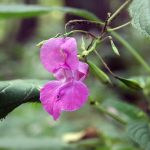 Himalayan Balsam was first introduced here in the UK in 1839 around the same time as Japanese knotweed and Giant Hogweed at a time when Europe and particularly the UK were leading the way in botanical species discovery and cultivation.
Himalayan Balsam was first introduced here in the UK in 1839 around the same time as Japanese knotweed and Giant Hogweed at a time when Europe and particularly the UK were leading the way in botanical species discovery and cultivation.
Himalayan Balsam was favoured for its speed of growth and a was a cheap and exotic addition to the garden as a comparable to highly expensive orchids and the likes of the social elite. It quickly established itself out of cultivation by route of river banks and water ways.
Himalayan Balsam has definitely made its impact predominantly near the waterways of Europe, the UK and is established in important waterways in Dorset, Wiltshire, Somerset, Devon and Cornwall.
The importance of keeping rivers and waterways in good order is vital to prevent flooding with increased rainfall and erosion being localized threats and melting ice raising the sea levels globally. Habitat modification from the presence of Himalayan Balsam .see small knock on effects in biodiversity which ripple into much larger impacts in the region.
Himalayan Balsam is a schedule 9 listed species in the wildlife and countryside act of 1981 which means a legal obligation to prevent the spread in the wild of species that may have detrimental effects to ‘ecological, environmental, or socio-economic’ interests. There are 40 plants currently listed in schedule 9 of which Himalayan Balsam is just one:
http://www.ukwildlife.com/index.php/wildlife-countryside-act-1981/schedule-9/schedule-9-part-2/
The increase of redevelopment of brownfield sites sees more and more contact with non-native invasive species. Sites and land that have been left derelict or un managed are optimum for the establishment of non-native species through vectors and lapsed biosecurity. The obligations of developers are to correctly deal with any non-native species like Himalayan Balsam and can potentiatially hold up work or cease work whilst a management plan is undertaken or completed.
How can we help you?
What does a Himalayan Balsam Survey consist of?
A request to survey will entail liaising onsite with a qualified surveyor.
Regardless if you know exactly where the Himalayan Balsam is on the property or land, or you have difficulty identifying it, the first contact and chat with you is incredibly useful as you can provide a great deal of historical and geographical information. A thorough walk through of the site will reveal any evidence of Himalayan Balsam, even in the winter time there are always indicators. We would also be looking for clues and information as to how Himalayan Balsam arrived at the location in the first place and how to prevent it from contaminating the rest of the property or land, this is known as biosecurity.
The site will then be measured and any Himalayan Balsam plotted It will also be established as to any Himalayan Balsam in neighbouring properties or land.
The information will be presented in a survey report in which a site plan will be generated and additional research will have been obtained to clarify any evidence e.g. land registry or aerial maps.
I have looked at your website and I’m sure that I have Himalayan Balsam am I breaking the law by having it on my property?
It is not illegal for you to have Himalayan Balsam on your property but it is your responsibility take on the role of remediating the problem.
Ignoring the problem will effect not just your property and its localised environment, but your neighbours properties and any others natural areas such as park land, water ways and areas of social or special interest. Failure to acknowledge your responsibility could bring you to the attention of local authorities and the police who have the power to issue Community Protection Notices:
https://www.gov.uk/guidance/prevent-the-spread-of-harmful-invasive-and-non-native-plants
Removing material from site that contains Himalayan Balsam must be classified as controlled.
It is illegal to dispose of controlled waste in the incorrect manner and without registering to do so and certainly disposing of Himalayan Balsam controlled waste improperly can result in prosecution.
What is entailed in the control and eradication of Himalayan Balsam?
As with Giant Hogweed, it is imperative to prevent the seeds of Himalayan Balsam from developing you can see them in full effect here at 0.30secs (touch-me-not)!
Knapsack sprayer application is perfect for areas that do not contain specimen shrubs desirable, annuals, perennials, lawns and grasses in very close proximity. The delivery method is incredibly effective at getting full coverage of all above ground foliage of Himalayan Balsam.
Stem injection is also very successful and highly effective in the eradication of Himalayan Balsam and is ideal if Himalayan Balsam is growing in formal gardens, areas of special scientific interest (SSSIs), Special Protection Areas (SPAs) Special Areas of Conservation (SACs) or other ecological restraints.
Revegetation should always be a consideration once a management plan is in the completion phase .This is a crucial opportunity to reinstate biodiversity after an invasive attack and can also be an effective way to prevent other INNS from exploiting a vulnerable location.
What type of herbicides do you use? Are they harmful to humans and animals?
We use a glyphosate based herbicide which can only be obtained under licence and must pass through stringent health and safety testing.
There are no restrictions as regards to exclusion from the area for humans or animals after application. Glyphosate is a systemic, non-selective herbicide which only targets and inhibits certain enzymes in plants, vital for protein conversion, growth and cell integrity.
All our operatives must have passed a specific examination in the safe use of pesticides and herbicides before handling and applying to Japanese Knotweed or any other INNS.
In the event that Himalayan Balsam is close to water courses or ditches, application for consent will be made to the environment agency. Glyphosate is one of the very few herbicides that will be considered in use around water.
Glyphosate is also non residual meaning that it will dissipate on contact with soils and will not remain or contaminate. We follow closely, current legislation and would never actively use a product that put yourself, ourselves or animals at risk.
What areas of the UK do you cover?
Our invasive plants control and removal services cover the following counties: Dorset, Hampshire, Wiltshire, Bristol & Bath, Gloucestershire, Somerset and Devon.

